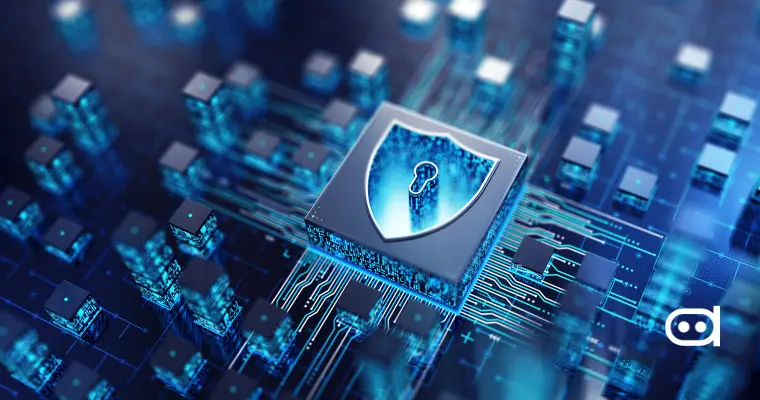
Artificial Intelligence has revolutionized cybersecurity, enabling organizations with advanced technologies to search for, deter, and control cyber threats. Traditional security measures are no longer adequate for dealing with evolving cyber risks. The AI adoption in cybersecurity solutions is now gaining traction with organizations, offering real-time threat detection, automated response mechanisms, and predictive analytics to fortify defenses across the board.
The selection process for AI cybersecurity tools ultimately matters for business continuity and resilience against cyber threats. An ideal tool works in concert with an organization`s existing infrastructure, thereby strengthening security posture and maintaining compliance with regulatory statutes. This article provides you, the readers, with a stepwise guide for choosing the AI cybersecurity solution that best fits the organization.
Step 1: Identify Your Cybersecurity Needs
The first thing to do is to inspect the current security architecture of the company with respect to an AI-driven cybersecurity tool. A comprehensive assessment can reveal several vulnerabilities, gaps, and areas that may require AI components. The knowledge of these factors will help prioritize what shield functions need automation or enhancement with AI.
Key Areas for AI Integration:
- Endpoint Protection: In this case, AI hunts and responds to threats posed to devices like laptops, mobile phones, or servers. Any organization with a remote workforce or with a considerable number of connected devices should give priority to this feature.
- Intrusion Detection & Prevention: AI solutions can detect the abnormal patterns of network traffic to avert the intrusion before it succeeds. This is especially true for organizations that handle sensitive financial or personal data.
- Automated Threat Response: One of the uses of AI in automation is to minimize human intervention promptly. In this respect, organizations should consider AI solutions integrated with their SOCs to improve operational effectiveness.
- Cloud Security: AI aims to strengthen the cloud by detecting anomalies in user behavior and potential breaches. Businesses migrating to a cloud environment must ensure their AI cybersecurity tool can deliver rigorous protection against cloud threats.
Understanding the security gaps and challenges facing your organization can inform and help you align the selection criteria with your most urgent cybersecurity needs.
Step 2: Evaluate the Features of AI Cybersecurity Tools
AI-powered security solutions vary significantly in quality. Therefore, it is important to discuss the features to be evaluated to ensure the tools align with the organization’s security objectives. Key features include the following:
- Threat Detection and Prevention: AI tools should identify threats and prevent harm. This comprises behavioral pattern recognition, signature-based detection, and anomaly detection.
- Automated Incident Response: By automating incident responses to security threats, chances of human error are reduced while containment action is taken quickly. Look for solutions that give self-healing responses and playbook-driven responses.
- Real-time Monitoring: These tools provide continuous monitoring with immediate alerts for detection against threats. Organizations should assess if the tool could integrate with their existing SIEM tools.
- Predictive Analysis Features: Any AI-based tool should deploy machine-learning applications to predict and avert trespass based on historical data. With this solution, organizations will be able to mitigate threats beforehand.
Suitable tools with these essential functions will ensure that organizations can deal with cyber threats efficiently.
Step 3: Compare Scalability and Integration
Cybersecurity needs to evolve as the company grows. It is, therefore, critical to choose an AI cybersecurity solution that will grow with the organization and integrate seamlessly with existing systems to ensure you get all the benefits of implementing AI in cybersecurity.
Key Considerations:
- Compatibility with Current Security System: The AI tool should smoothly integrate with the current security setup, which might include firewalls, SIEM solutions, endpoint security solutions, etc. Non-integration would leave security blind spots.
- Scalability: As the company keeps expanding, the solution should deal with higher workloads, larger networks, increasing numbers of users, etc. Check that increased traffic volume can be easily accommodated with no performance lag.
- Interoperability: Establish whether the AI tool uses open standards and APIs for easy integration into third-party security solutions. This is valuable for organizations that depend on a multi-vendor security stack.
A great blend of scalability and integration in an AI cybersecurity system assures long-term security even through operational disruption.
Step 4: Assess Vendor Reputation and Support
Assessing vendor reputation is just as important as assessing the tool itself. The credibility of the vendor, level of customer support, and their commitment to innovations should be analyzed.
Steps to Assess Vendor Reputation:
- Research Market Positioning: Look for industry reports, independent review magazines, or other publications from a cybersecurity perspective. In general, vendors with long-standing placements in industry ranks and analyst reports are taken more seriously.
- Client Testimonials & Case Studies: How well does the tool really work? These all-important insights come only after learning about the experiences of other organizations using that tool. For this purpose, ask vendors for case studies and/ or any other method of assessing real-life successful implementation.
- Customer Support Assessment: Good coverage should entail 24-7 support, training, and regular updates. The limited support from the vendor will hamper the incident response and increase downtime.
A good vendor should be willing to offer a solid support system and facilitate smooth deployment while ensuring ongoing improvement of security.
Step 5: Consider Costs and ROI
Acquisition of AI-powered cybersecurity tools constitutes a whopping financial engagement. The long-term advantages, however, tend to outweigh these expenditures, as they reduce the number of security breaches and increase operational efficiencies.
Cost Considerations:
- Price for initial acquisition and subscription: Find out if the product is being sold outright or through subscriptions. The latter usually provides for updates to the system and continued support.
- Long-term ROI: Calculate how much the tool is saving by preventing breaches, downtimes, and compliance stickiness.
- Look out for hidden costs: Costs incurred during upgrades or maintenance and training will not be covered by warranties. Some vendors may even charge for extra support or customization features.
A balanced program for investment in AI cybersecurity applications achieves financial viability while strengthening security perimeters.
Step 6: Test Before Committing
Before launching a full-scale installation of any AI cybersecurity tool into the given infrastructure, the tool’s capabilities should have already been tested successfully through a Proof of Concept (PoC).
Some Practical Considerations are as follows:
- Trial Period: Pick AI Cybersecurity Tools for which a trial or PoC period is defined for actual performance measurements, independent of the marketing hype. Limited-functionality trials or full-feature testing might be available from the vendors.
- Measurement Performance: Evaluate the accuracy, false-positive rate, and response time of the tool. Compare results to other security tools to measure improvement.
- User-Friendliness: The tool should be user-friendly to minimize disruption to the existing workflow while being practical in integrating their daily work with it.
An extensive testing phase enables the organizations to validate the effectiveness of the tool before giving the final commitment.
Step 7: Security and Data Privacy Assurance
Tools with AI in cybersecurity are responsible for handling sensitive data, hence, proper attention must be given to its security and privacy safeguards.
Key Considerations:
- Data Security Standards: Checks for all secure encryption standards, secure access blocks to data, and secure AI model rules. Choose end-to-end encryption based on a zero-trust architecture.
- Regulatory Compliance: Monitoring whether the tool has been laid down to achieve its obligations under the assigned industry standards like GDPR, CCPA, ISO 27001, and more. Otherwise, it could incur huge fines along with reputational damage.
- False Positive Rate Reduction: If your tool has a large false-positive rate, it will consume a lot of unnecessary time. Train your AI to identify actual threats versus benign anomalies and choose products that promote adaptive learning.
Conclusion
To conclude, the selection of AI cybersecurity tools to enhance your security strategy is undoubtedly necessary and offers a systematic methodology. Every organization needs to identify its security needs and then assess primary features and integration needs, as this decision affects vendor reputation, cost, and compliance issues.
After undergoing this due diligence, an organization is well poised to make a confident decision to pick an AI-powered cybersecurity tool that augments its overall security posture, provides respite from current threats, and guarantees resilience against any future cyber attacks. Thus, organizations will benefit from this investment today as it will, in turn, propagate a resilient defense structure in the future.







